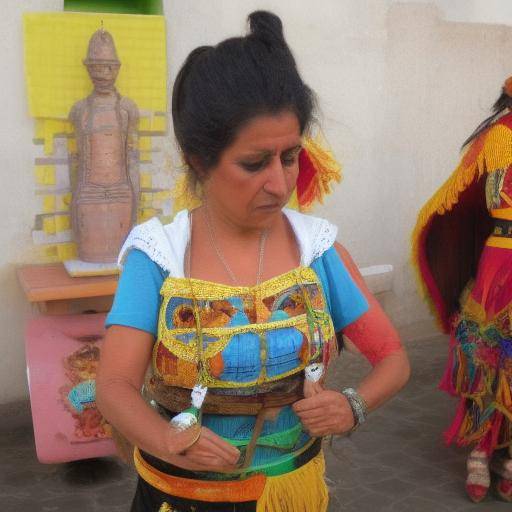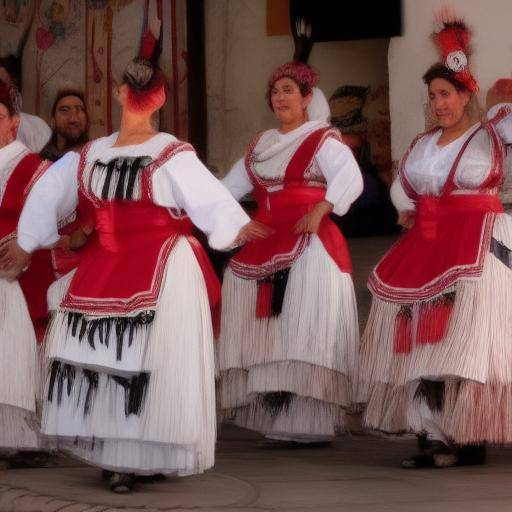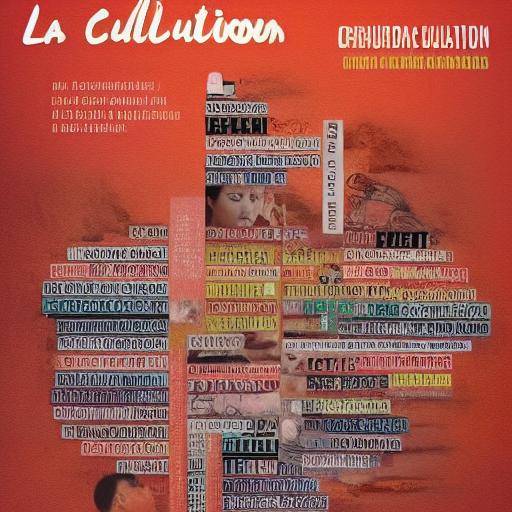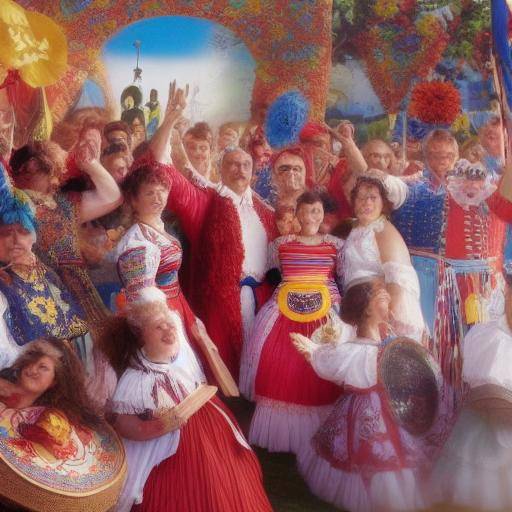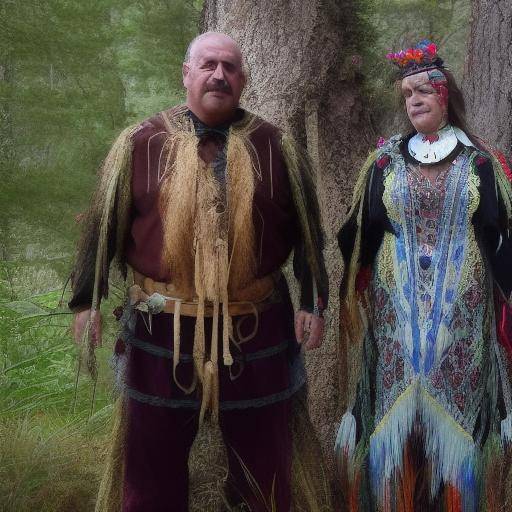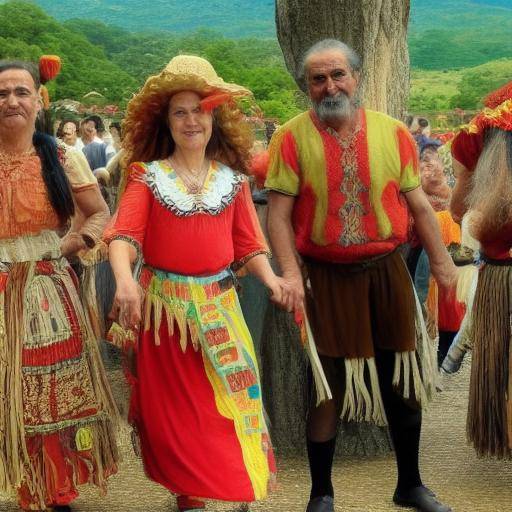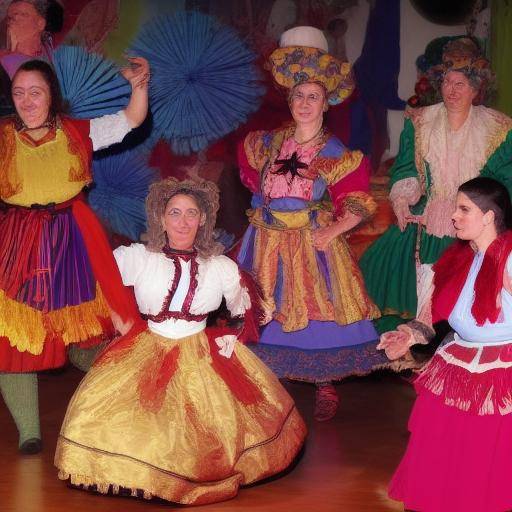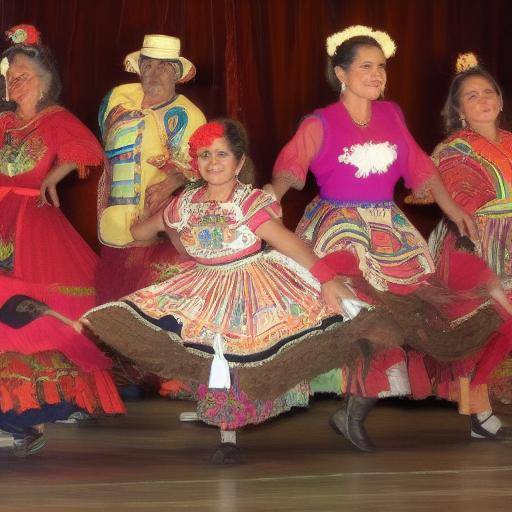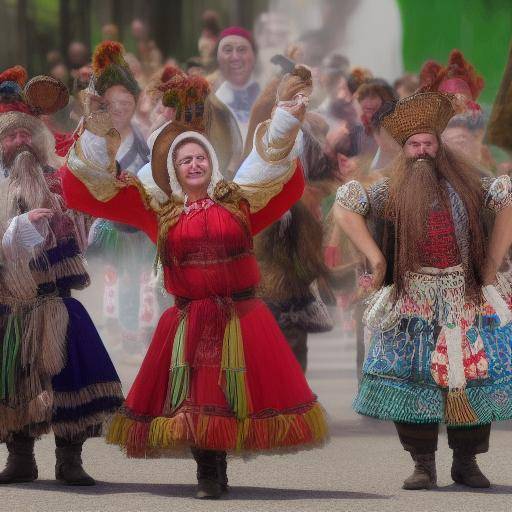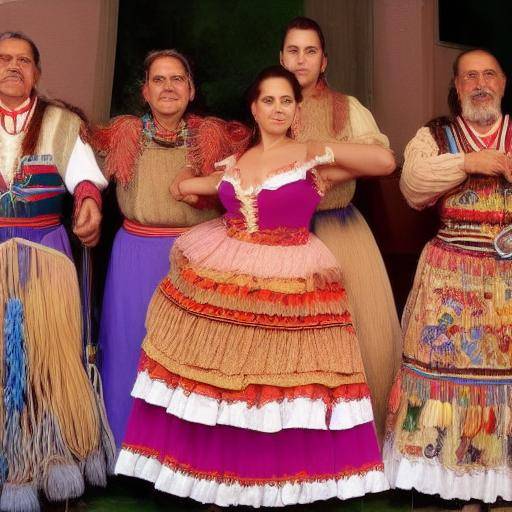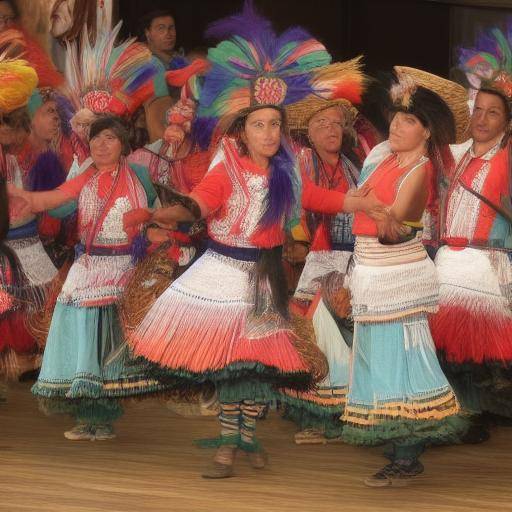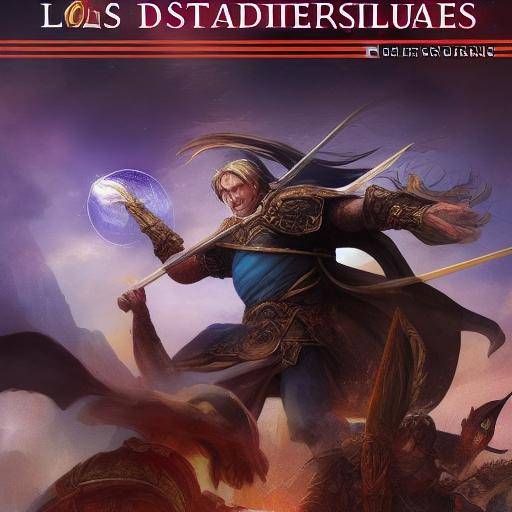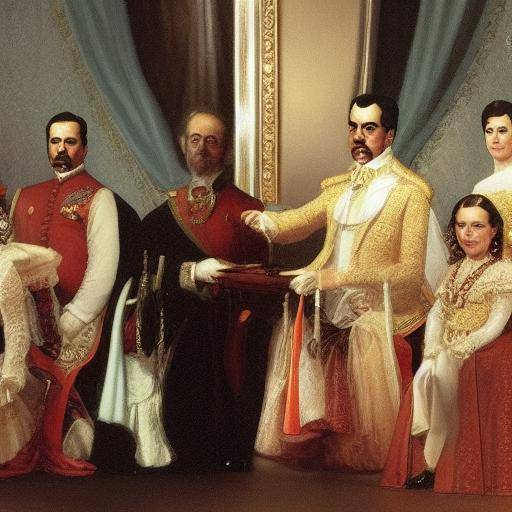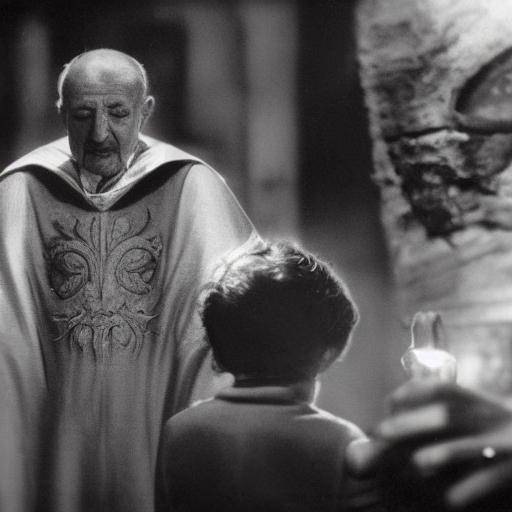
In the Middle Ages, superstitions were a fundamental part of everyday life. Superstitious beliefs and practices were rooted in the culture of the time and had a significant impact on how people interpreted and faced the challenges of life. In this article, we will explore in detail the superstitions in the Middle Ages, unraveling their myths and beliefs to understand how they influenced the society of that time and how they persist today.
Introduction
The Middle Ages was a fascinating period of history, impregnated with deep-rooted superstitions and beliefs that shaped the collective mindset. Many of these superstitions remain topics of interest in contemporary society, which demonstrates their lasting impact over time. In this article, we will immerse ourselves in the world of superstitions in the Middle Ages, exploring its origins, evolution and legacy, as well as its relevance today. At the end of this journey, we hope that readers will gain a more complete understanding of this crucial aspect of the past and its influence on the present.
History and Background
The superstitions in the Middle Ages had deep roots in the mentality and the worldview of society at that time. The lack of knowledge of natural phenomena, combined with strong attachment to traditions and myths, contributed to the spread of superstitious beliefs. From the influence of astrology in everyday life to belief in the healing powers of amulets and amulets, superstitions came to encompass all aspects of medieval life.
In this context, the Church played a crucial role in perpetuating many of these superstitions, as some of the popular beliefs were closely linked to the religious interpretation of the world. Over the centuries, these beliefs intertwined with social life, impacting decision-making, health and the way they faced everyday challenges.
The Middle Ages witnessed a constant evolution in superstitions, marked by the fusion of pagan and Christian traditions, as well as the influence of various currents of thought. As medieval society was undergoing major changes, superstitions were also transformed, adapting to new realities and challenges.
In the modern era, the superstitions of the Middle Ages have left a lasting legacy reflected in our contemporary culture. Many of the practices and beliefs that were rooted at that time have persisted until today, influencing the way we perceive certain events, objects or situations.
Thus, understanding superstitions in the Middle Ages not only gives us a fascinating historical panorama, but also sheds light on the persistence of certain conceptions in today's society.
Analysis in Deep
To fully understand the impact of superstitions in the Middle Ages, it is crucial to analyze both their benefits and their challenges. While in many cases these beliefs provided comfort and a sense of control over the unknown, they could also generate irrational fear and limit critical thinking. Therefore, it is essential to weigh the positive and negative aspects of superstitions in the context of medieval times and today.
Benefits
Superstitions in the Middle Ages provided people with an interpretative framework to face situations that might otherwise seem unjust or uncontrollable. From protective rituals to practices to attract good luck, these beliefs provided a sense of security and control in a world that was often perceived as chaotic and capricious. This psychological aspect of superstitions, which allowed people to face uncertainty, is a key element in understanding their root in medieval daily life.
Challenges
Despite their emotional and psychological appeal, superstitions also had their disadvantages. The irrational fear generated by superstitious beliefs could lead to wrong decisions, as well as the spread of harmful or counterproductive behaviors. Moreover, these beliefs often limited the exploration and understanding of natural phenomena, slowing the development of critical and scientific thinking. In contemporary society, superstitions can continue to have similar effects, affecting rational decision-making and promoting the perpetuation of unfounded ideas.
Current trends
Although the Middle Ages are behind, many of the superstitions that emerged at that time continue to manifest in contemporary forms. The influence of astrology, the persistence of beliefs in amulets or talismanes, and the popularity of rituals to attract good luck are examples of the continuity of superstitions in modern society. At the same time, the dissemination of scientific information and the promotion of critical thinking have led to greater skepticism regarding superstitious beliefs, promoting a deeper dialogue on their validity and usefulness.
Comprehensive review
In exploring the application and impact of superstitions in different contemporary contexts, it is essential to analyse both success cases and limitations associated with these beliefs. Understanding how superstitions can influence decision-making, as well as the interpretation of events and situations, allows a more complete appreciation of their relevance and continuity in today's society.
Applications and Best Practices
Superstitions continue to play an important role in popular culture, manifesting themselves in rituals, traditions and daily practices. Identifying the most entrenched superstitions in different cultural contexts and understanding their meaning and usefulness provides a valuable perspective on how these beliefs persist and evolve. At the same time, exploring the applications of superstitions in the field of psychology and emotional well-being provides a deeper view of their impact on people's lives.
Perspectives of Experts and Future
Since superstitions continue to be the subject of debate and study, it is essential to analyse the perspectives of experts investigating their influence in today ' s society. The opinion of psychologists, anthropologists, sociologists and other specialists provides a multidisciplinary view on the role of superstitions in contemporary life, as well as their implications for the future. This comprehensive approach allows to identify emerging trends and project possible scenarios related to the persistence or decline of superstitions in the modern world.
Comparative analysis
The comparison of superstitions in the Middle Ages and in the contemporary context reveals both similarities and differences that help to contextualize the evolution of these beliefs over time. When examining how certain myths and superstitions persist or transform, it is possible to better understand the interconnected dynamics between the past and the present.
Similarities and Variances
The similarities in the superstitions between the Middle Ages and the modern era demonstrate the persistence of certain human concerns and fears over time. The search for protection, the longing to understand destiny and appeal to supernatural elements are common elements that cross both times. In turn, differences reflect significant historical and cultural changes, as well as the influence of science and technology in understanding natural phenomena.
Examples and Scenarios
Exploring specific cases of superstitions in the Middle Ages and its modern counterpart allows to identify patterns of continuity and transformation. The adaptation of popular myths and beliefs to new contexts reveals the ability of superstitions to evolve and maintain their relevance over time. At the same time, the detailed analysis of how certain superstitions have lost their prominence or have acquired new connotations provides a more complete view of their dynamics in contemporary society.
Practical Tips and Accessible Recommendations
In the light of the persistence of superstitions in the current world, it is important to provide practical advice to help people understand and address these beliefs in an informed manner. Providing guidelines for assessing the validity of superstitions, as well as strategies to counteract their influence in daily decision-making, helps to promote a critical and evidence-based mentality.
- Fostering Critical Thinking: Encouraging the reflexive questioning of superstitions helps to develop an analytical mentality and promote understanding based on scientific evidence.
- Search Confidential Information: Recommending the search for reliable and verified sources to contrast and analyze popular beliefs helps to demystify superstitions and foster a reason-based understanding.
- Promote Scientific Education: Promoting scientific education and understanding of natural phenomena provides tools to challenge and dismantle unfounded superstitious beliefs.
- Fostering the Open Dialogue: Promoting respectful and open dialogue on superstitions in educational environments and communities fosters a shared and reflective understanding of these beliefs.
Industry Visions and Expert Reviews
In order to enrich the understanding of superstitions and their impact on today's society, it is essential to gather and present opinions from experts and prominent figures in relevant fields. The perspectives of psychologists, sociologists, anthropologists, historians and other specialists provide an enriching panorama that nourishes the analysis and reflection on the subject.
Implications for the Future
The views and predictions of experts regarding superstitions in today's society shed light on possible future trends and emerging challenges. The consideration of sociocultural, technological and scientific factors allows to project scenarios related to the evolution of superstitious beliefs and their influence on individual and collective decisions.
Case Studies and Practical Applications
The presentation of case studies that illustrate practical applications of superstitions in different contexts offers concrete examples of their impact and relevance in everyday life. In analyzing the results, lessons learned and implications arising from these cases, the understanding of superstitions and their influence in various fields is enriched.
Lessons Learned and Results
Exploring lessons learned from specific case studies provides valuable information on how superstitions can influence decision-making and the interpretation of everyday events. In assessing results and their long-term effects, it is possible to identify patterns, trends and possible areas of intervention.
Applications in Different Contexts
Analyzing the application of superstitions in diverse contexts, such as health, business decision-making or the personal environment, offers a multifaceted view of their influence and effects. The differences and similarities in the manifestation of superstitions in different scenarios enrich the understanding of their dynamics and relevance.
Future Trends and Predictions
In projecting future trends related to superstitions, it is essential to consider multiple factors that influence their persistence or change. From the diffusion of scientific information to the evolution of popular culture, future trends offer an anticipation of the continuing role of superstitions in modern society and the possible transformations they may experience.
Prospective Analysis
The prospective analysis of superstitions in the contemporary context provides a basis for assessing possible future scenarios and their impact on everyday life. In considering the role of science, technology and education in the understanding and demystification of superstitions, it is possible to project scenarios that reflect significant changes in the perception and management of these beliefs.
Challenges and Opportunities
In exploring the challenges and opportunities associated with future superstitions, it is possible to identify areas of action and development that influence their persistence or decline. The consideration of emerging challenges in the sociocultural and technological context provides a framework for addressing critical aspects related to superstitions and their influence on contemporary society.
Conclusions and FAQs (FAQs)
After in-depth analysis of superstitions in the Middle Ages and their influence in contemporary society, it is pertinent to conclude with a summary highlighting the key points addressed throughout the article. The inclusion of frequent questions (FAQs) also provides answers to common questions related to superstitions, generating greater understanding and clarification on this topic of cultural and historical relevance.
Conclusions
Superstitions in the Middle Ages not only represented rooted beliefs in the mentality of the time, but also left a lasting legacy that continues to influence contemporary society. Understanding their benefits, challenges and evolution over time allows us to appreciate their importance in different cultural contexts and their continued impact on decision-making and the interpretation of events.
In analyzing superstitions in the Middle Ages and in today's society, it is possible to observe both continuity and transformations that reveal the dynamics inherent in these myths and beliefs. Critical reflection on its persistence and relevance in the modern world sheds light on future trends and possible scenarios related to its influence on everyday life.
Frequently asked questions (FAQs)
1. What were some common superstitions in the Middle Ages?
Common superstitions in the Middle Ages included beliefs in the influence of stars in destiny, the effectiveness of amulets and talismans, and the interpretation of natural phenomena as omens.
2. How have superstitions evolved from the Middle Ages to the present?
Superstitions have experienced significant evolutions, adapting to new cultural and technological contexts. Although some beliefs persist, others have lost relevance or have acquired new connotations.
3. What influence do superstitions have in contemporary society?
Superstitions continue to influence the current society, manifesting itself in everyday practices, interpretations of events and individual decisions. Its impact is multidimensional and persists in different fields.
4. How can superstitions be addressed in an informed and reflective manner?
Addressing superstitions in an informed way involves fostering critical thinking, seeking reliable information, promoting scientific education and fostering open dialogue on these beliefs.
5. What role do superstitions play in contemporary popular culture?
Superstitions continue to play a relevant role in popular culture, manifesting themselves in traditions, rituals and practices that reflect their continuity and evolution in modern society.
6. What are future trends related to superstitions?
Future trends related to superstitions include the influence of scientific education, changes in sociocultural perception and the evolution of technology in understanding and managing these beliefs.
In conclusion, superstitions in the Middle Ages and their legacy in contemporary society represent a subject of deep interest with significant implications in human history, culture and psychology. Through a detailed analysis, it is possible to appreciate the complexity and persistence of these beliefs, as well as their continued influence on the behavior and interpretation of reality. This journey through superstitions in the historical and modern context provides an enriching vision that invites us to reflect on its place and function in human experience.
In deepening the superstitions in the Middle Ages, we have explored their influence in the society of that time, as well as their persistence and evolution today. From myths and beliefs rooted in the medieval mentality to its reflection in contemporary culture, superstitions continue to inspire reflections on our relationship with the unknown and the inexplicable.
For more information on superstitions in the Middle Ages, their influence on contemporary society and their relevance in the current world, we invite you to explore additional resources and deepen this exciting issue that continues to generate interest and debate today.



